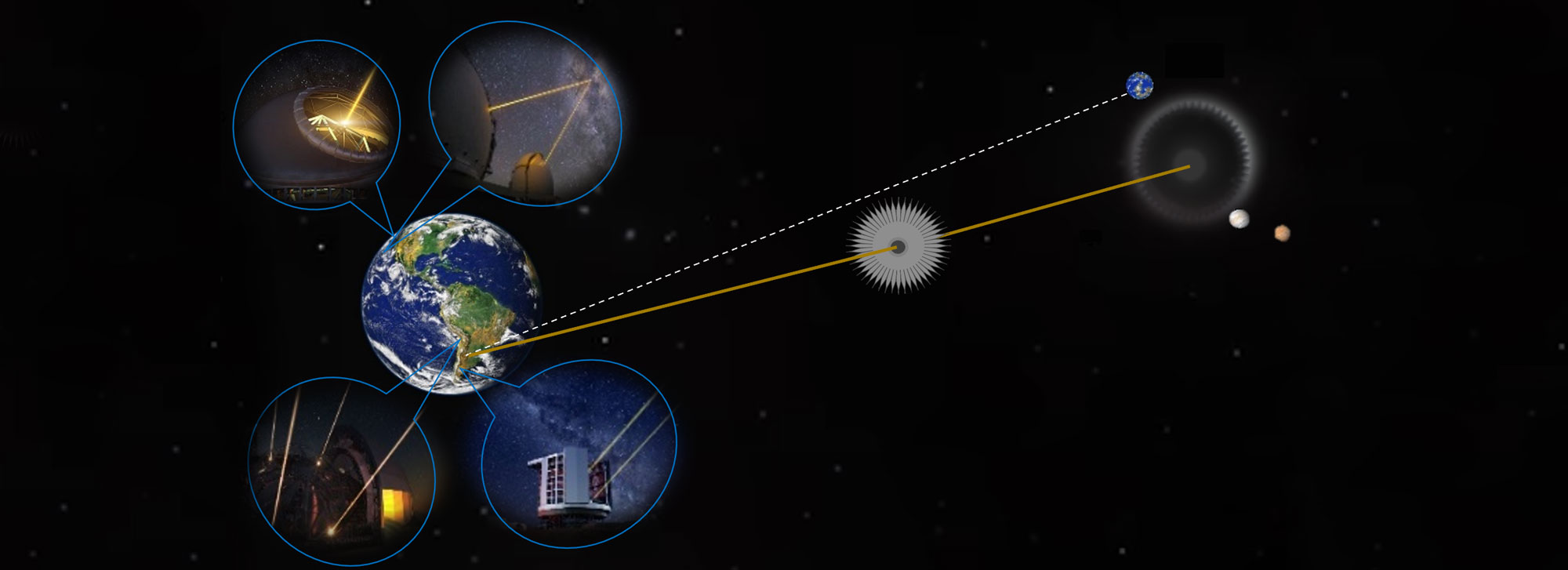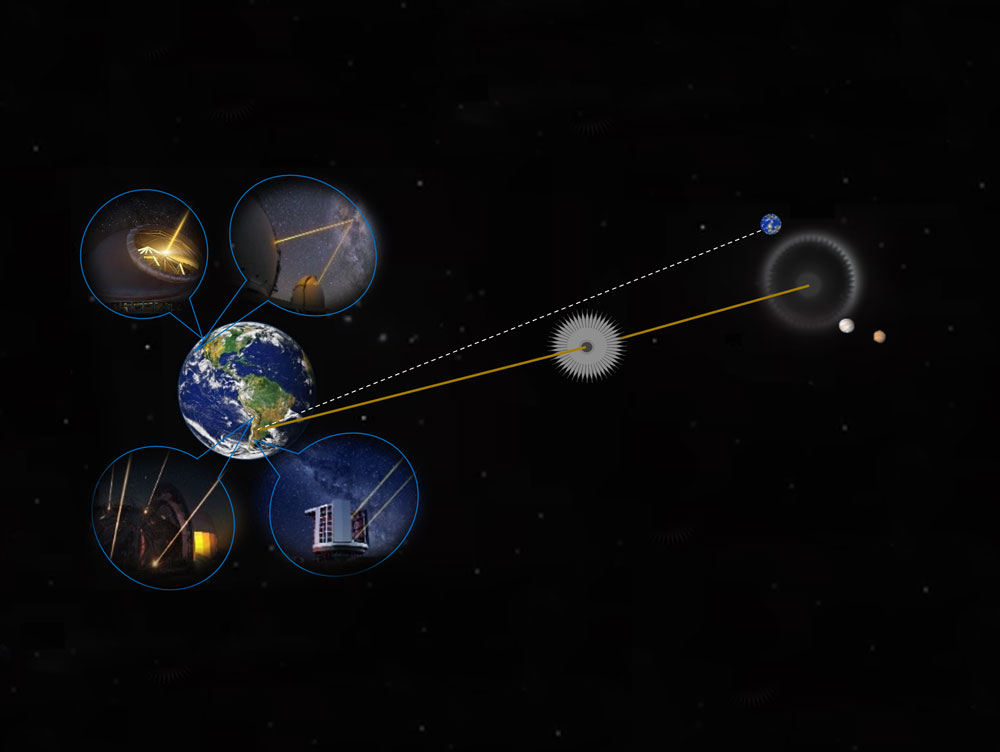Workshop Overview:
Our workshop study provides a unique opportunity to develop a strategic roadmap for advancing hybrid ground-space observatories and partnerships. By bringing together leading experts across technical, engineering, and scientific fields, we aim to create a comprehensive plan for detecting the first Earth-like exoplanet orbiting a sun-like star from this collaborative effort. Our KISS study team will bring together world-class experts, including Nobel Laureates, with multi-disciplinary background needed for the success of this study, covering exoplanet science, high-contrast imaging, space and ground instruments, starshades, mechanical engineering, precision deployment of large space structures and materials, orbital dynamics, formation control for alignment, mission yield, extreme adaptive optics, laser guide stars, atmospheric modeling and turbulence, as well as representatives from the largest ground-based telescopes and observatories. Together, we are committed to this study, eager to drive forward Interdisciplinary innovative approaches.
Our objectives address key technical and science issues and highlight the uniqueness of these concepts through imaging and spectral science products. It is important to relate the predicted performance to potential Habitable World Observatory (HWO) missions at UV/Vis/NIR bands. We will explore integrating and networking several ground-based telescopes to increase the number of potential targets and reduce fuel needs. The key topics are organized into five main categories:
- Exoplanet science featuring the formation and characteristics of extrasolar planetary systems, physical and orbital characteristics, target prioritization, comparative planetology, exoplanet atmosphere, spectral retrieval, and habitability.
- System engineering including starshade mechanical, optical, and formation flying tolerances; telescope optical, pointing, and detector requirements; fuel, orbital dynamics, spectral and angular resolution, and spectral background calibration.
- Instrumentation questions highlighting advancements in extreme adaptive optics with laser guide stars, enhancements to large ground telescopes, new hybrid observatories, high-resolution post-processing, cross-correlation spectroscopy, integrating coronagraphs and starshades, atmospheric modelling, and dispersion corrections.
- Precursor observations focusing on precursor mission opportunities, pathfinder missions, and requirements to identify potentially observable exo-Earths and habitable exoplanets (e.g. knowledge of mass and orbit).
- Starshade technology covering developing, building and launching large deployable starshades; outlining the steps for deploying 35 m (HWO), 70 m (HWO), and 100 m (HOEE) starshades; on-orbit servicing; meeting all deployable and precision requirements; and, exploring inflatable-based projects alongside other deployment methods, and formation control.
The outcome of this study will significantly advance the objectives of the Astrophysics Decadal Survey and NASA’s planning for the Habitable World Observatory (HWO). We will produce a final report summarizing the key findings of this workshop for NASA HQ and other key stakeholders, and intend to publish results in a peer-reviewed journal. Our findings will establish a clear implementation plan, outlining actionable steps for representative space missions preparation and collaboration opportunities for uniquely unveiling new horizons for scientific breakthroughs in planetary science and astronomy.




